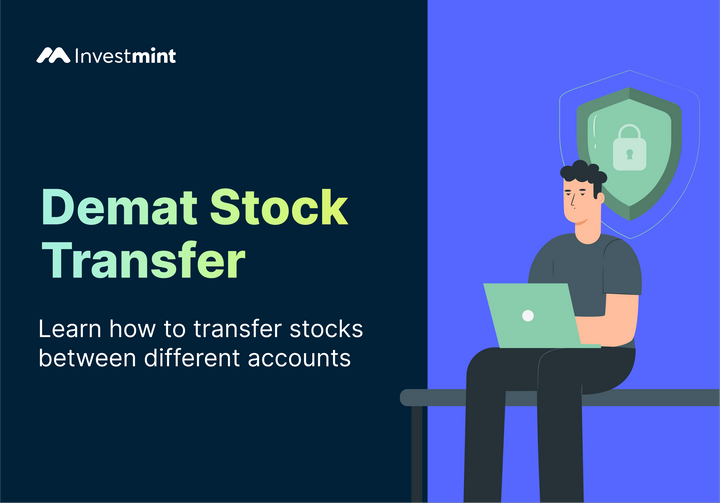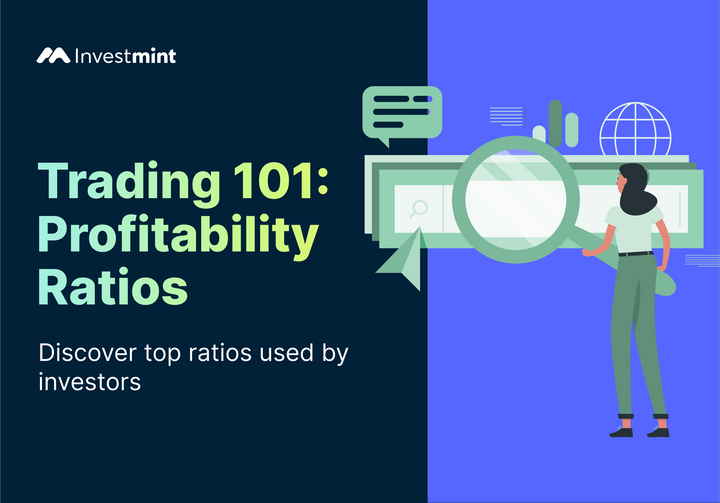Guide to Intraday Trading: Things You Should Know
Intraday trading is often considered a way to make regular returns in the stock market. Follow this guide to become a successful intraday trader.

Attention Intraday Traders!
Are you a stock market enthusiast who invested in some stocks on the recommendation of your friends, and the stocks are now lying dormant in your account?
To trade in the market, you must pay close attention to the stocks you invest in. The objective of buying stocks can be different for each investor.
You can become a buy-and-hold investor (long term) or opt for intraday trading and book profits on stocks on a daily basis.
If this seems interesting to you, this article will explain all the major points and explain the steps on how to become an intraday trader.
But First,
What Is Intraday Trading?
Intraday trading in stocks can be explained as buying and selling stocks within the same trading day. Usually, stocks are quite volatile on an intraday basis. Therefore, you can bank on the changes in prices in order to book profits.
The trade becomes an intraday trade when you have to buy or sell on the same day, or the broker can square off the position for you before the end of the day.
Intraday trading is not suitable for all traders. You may require a certain skill set and acumen to master the techniques and get the hang of the strategies used in intraday trading.
Understanding Delivery Trading vs Intraday Trading
Let us first take a closer look into what delivery trading is.
Delivery trading is taking the delivery of stocks in your DEMAT accounts. The basic point of differentiation between intraday trading and delivery trading is the holding period of stocks.
Whereas, when you carry out intraday trades, you square off the position by the end of the day. While in delivery trading, you can hold on to stocks in your DEMAT account for as long as you want.
In intraday trading, stocks are purchased as a means to gain profits, contrary to the concept of delivery trading, where the stocks are purchased as a means of investment.
How to Start Intraday Trading?
When it comes to intraday trading, many intraday indicators and intraday trading strategies are applied when you select and trade a stock.
To start with intraday trading, you should have a trading account. If you are a beginner, consider reading and knowing terms like stop loss, target and how to place orders.
What do you need to know?
The first thing that you would want to know is a stop loss.
A stop-loss order is placed to minimise or limit the damage control if the stock does not move according to your prediction.
When you begin intraday trading, you will encounter brokerage charges that differ from delivery trading. An insight into the brokerage costs can help you analyse the profitability of the trade.
Is intraday trading meant for you?
If you are good at analysing charts and patterns, you can definitely benefit from intraday trading. You can acquire the technique of technical analysis as you trade more frequently.
Characteristics of an Intraday Trader?
As an intraday trader, you can stick to these points when you trade in the market.
- Choosing liquid stocks
When you trade in the market, you can have a look at the top 50 liquid stocks and trade in these stocks. Selecting an illiquid stock is a big no-no for intraday trading.
- Selecting good quality stocks
As traders, we can never expect to have all the profits. Selection of stocks can give you returns that are over and above the normal returns of the market. The bid-ask spreads should be low and try to exit unfavourable positions quickly.
- Do not fear losses, but book more profits.
As traders, losses are inevitable. Patience is the key to a successful trade, and you should stick to the pre-decided strategy.
How to Set Up an Intraday Trading Strategy?
To start intraday trading, one needs to get a hang of the markets and how they work.
Understanding the market movements
Intraday trading for beginners is not a cakewalk. You may not be able to predict market movements. That is absolutely fine! Even expert traders are not able to predict market movements daily. If the market moves against your expectations, it is important for you to exit your positions and not cling to hope. Being content and making a decent profit daily is the key to a successful intraday trade.
Importance of indicators
Sometimes, even the best intraday indicators cannot track the market trend and present the right picture. Indicators and understanding them can maximise your returns and be your comprehensive guide for trading. For example, it is advisable that you always map a resistance and support level for a stock when you start trading. This can limit the losses for your trade.
How do you select a stock for trading as a beginner?
As a novice investor, you can opt for stocks with high trading volume and liquidity. Indicators and technical analysis form a crucial part of stock market trading. A thorough research of the company and fundamentals will be an add-on advantage.
How Does Intraday Trading Work?
The basic idea for intraday trading is to buy low and sell high or sell high and buy back low.
- Placing a trade
While placing a trade, you select the margin square off order in case of an intraday trade. This ensures that the trade will be automatically squared off at the end of the day.
After you place a trade, it is important that you respond and react to the fluctuating stimuli. This helps to close positions faster and at good profits. A stop loss can be placed if you do not monitor the trade continuously to avoid major losses.
- Execution of a trade
The execution of the trade takes place when the buy or sell order is fulfilled. For that, you can place the order, and if there are any buyers or sellers, the order can be executed immediately.
The settlement of the trade works on the T+1 mechanism. For example, if you trade for Rs 2,00,000 and exit the position with a profit of Rs 2,15,000, the profit of Rs 15,000 will be available after one day of the execution of the trade.
- Using Indicators
When you combine your trading strategy with indicators, it becomes easy to understand the market movements and the volatility in stock prices. For example, Moving averages, Bollinger bands and Relative Strength Index(RSI) are some useful intraday trading indicators.
The Advantages and Disadvantages of Intraday Trading?
Advantages of intraday trading:
- The capital requirement for intraday trading is very low.
- Trading on margins can easily amplify your profits.
- With some research into the markets and stocks, you can earn decent profits from the markets.
- You can either trade long or short in the stock to amplify returns.
Disadvantages of intraday trading
- The period for trading is quite short and you might find it challenging initially.
- Leverage can have a negative impact as it can magnify losses for you.
- The markets are always unpredictable
- Some trades can go wrong because of the downturn in the markets.
Risks Involved With Intraday Trading?
Over Trading
When you start to trade, and every strategy falls into place, then it becomes a psychological addiction for you. This is one of the major risks involved with intraday trading.
To avoid this, you can follow a disciplined approach towards trading and try to strategise every trade.
Selecting Stocks
Due to an incorrect selection of stocks, you might be exposed to losses. Technical analysis and indicators may not always predict the correct market movement.
Though stock selection can never be foolproof, you can always resort to fundamentally strong and sound stocks.
Trading on Margins
Trading on margins can prove to be the exact opposite of what you have expected. This strategy is always a double-edged sword.
If you are new to investing, limit trading on margins or do so only if you are a hundred per cent % sure that the trade will go as expected.
Summary
- Intraday trading involves buying and selling stocks within the same trading day, capitalizing on price fluctuations.
- Delivery trading is long-term, while intraday trading aims for short-term profits.
- To start, you need a trading account and an understanding of terms like stop loss and target.
- Intraday traders need certain traits for success but face risks like overtrading and stock selection challenges.
- Intraday trading involves executing trades, monitoring fluctuations, and using indicators to gauge market movements, with both advantages and disadvantages.
Checkout more interesting reads on our blog





